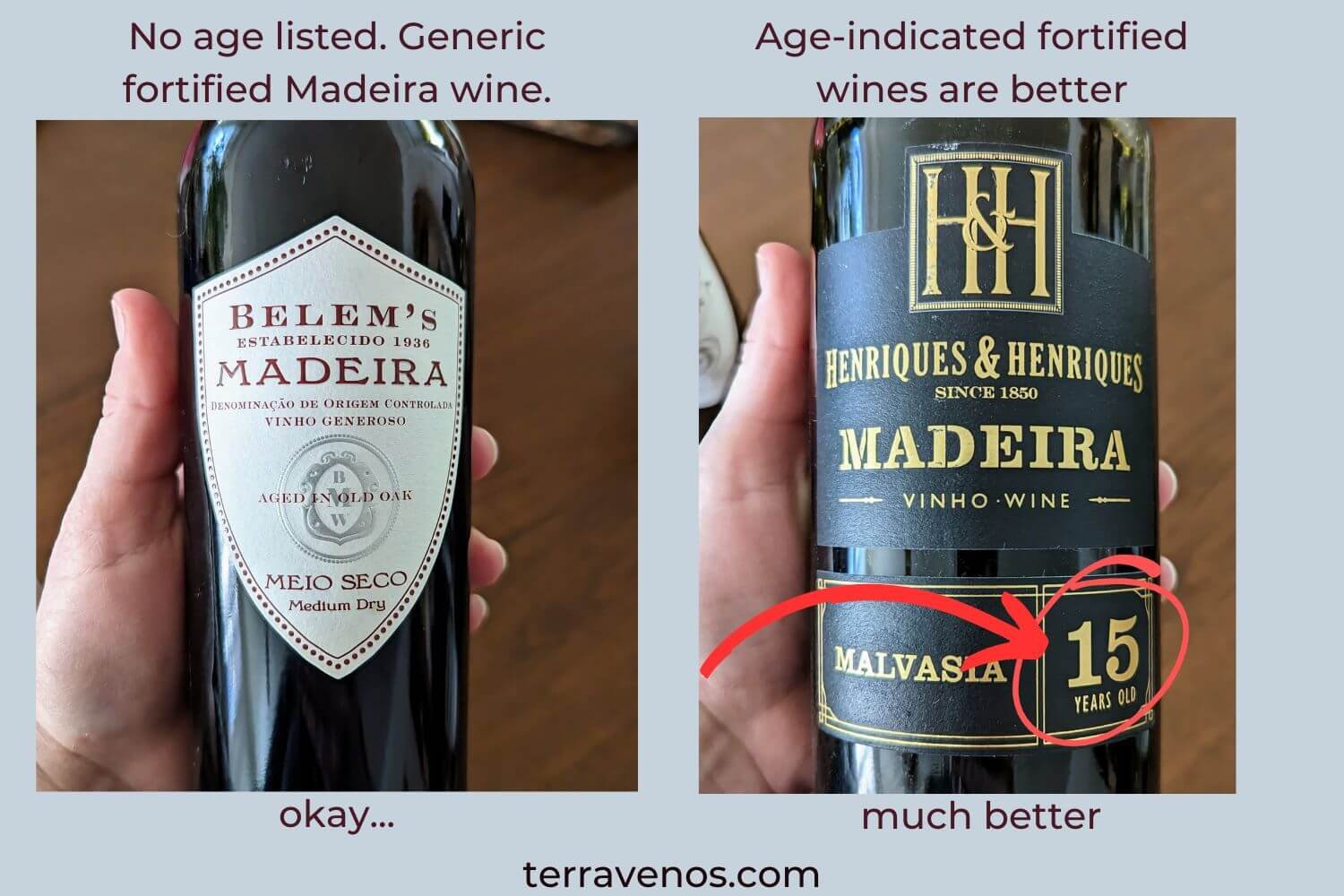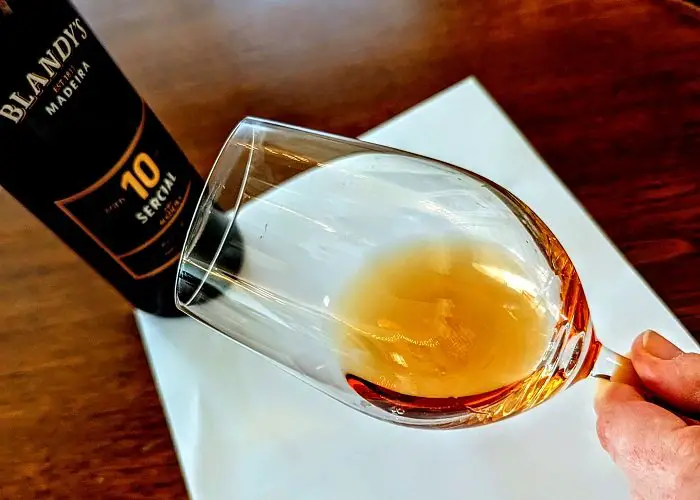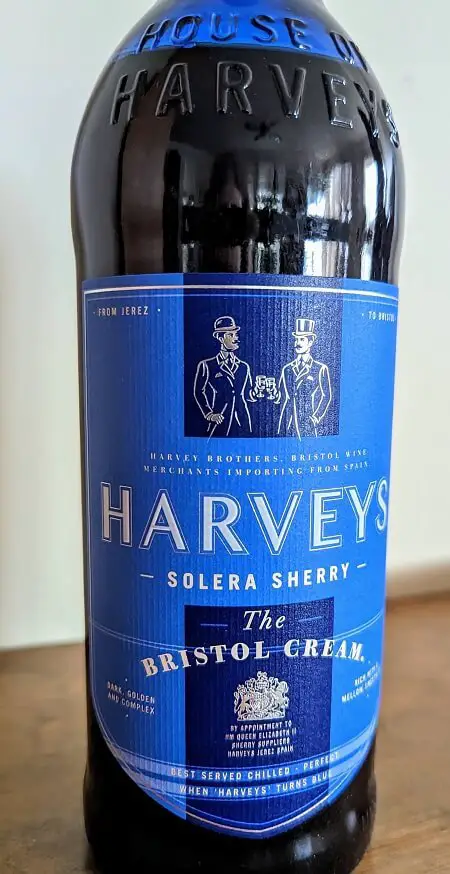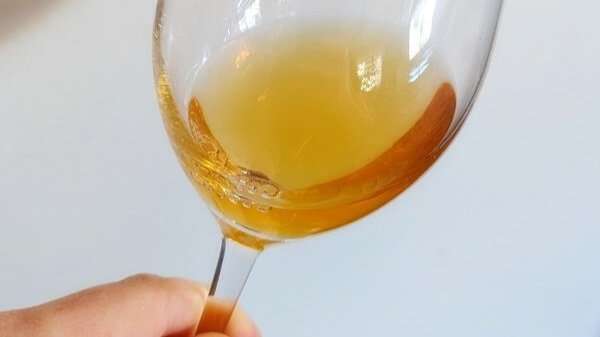
Just like regular table wines, fortified wines come in a range of styles that you’ll want to explore.
A good fortified wine delivers a complex flavor profile that can range from nutty and caramel to fruity and floral. Port, Sherry, and Madeira are three popular fortified wines, with unique styles, aging processes, and food pairings. Good fortified wine will be complex, intense, and balanced.
Here’s what you need to know about fortified wines and how to choose a good fortified wine the next time you’re at your local bottle shop.
What Is Fortified Wine?

Fortified wines are wines made with grapes, just like regular unfortified wine, but the winemaker adds spirits during the winemaking process, fortifying the wine.
Fortified wines can be dry or sweet.
They can add spirit during fermentation when there’s still grape juice left over. This will make your fortified wine sweet. Or, they can add the spirit after the wine is done with fermentation. This will make your fortified wine dry.
Helpful Tip: Fortified wines are relatively uncommon for the average wine drinker, so I put together this post that goes into more detail on the differences between fortified and unfortified wines.
Fortified wines come in a range of styles and can be red, white, and occasionally even rosé (pink Port, anyone?).
Fortified wines have a long history in the winemaking world. Originally, fortified wines proved crucial to keeping wine fresh during long overseas voyages. Today, many regions carry on their own fortified winemaking traditions. These unique wines can be a delight to explore, but hard to find.
Today, fortified wines are popular with wine enthusiasts partly because of their close ties to history, but also because they offer a unique take on wine that you don’t get from unfortified wines.
There’s a time, place, and pairing opportunities just for fortified wines that can enhance your wine-infused lifestyle.
What Are the Different Types of Fortified Wines?
Three classic, widely available fortified wine styles are: 1) Port, 2) Sherry, and 3) Madeira.
Good Fortified Wine #1: Port Wine
Port wines from the Douro region of Portugal are made using a blend of traditional Portuguese grapes, including Touriga Nacional, Touriga Franca, and Tinta Roriz, among others.
Grape spirit gets added after the wine has fermented to 5%-7% alcohol. The alcohol will kill the yeast, leaving sweet, unfermented grape juice behind making your Port wine sweet. Port must be 19%-22% alcohol by volume.
Fun Wine Buying Fact: Not all Port wines are red. You can find White Port (a personal favorite), and even Rosé Port wines.
What Are Port Wine Flavors?
Port wines have typical red wine flavors, like blackberry, cherry, and plum. You’ll also detect licorice, leather, and even black tea. Port wine begs to be paired with chocolate and nuts.
Helpful Tip: Port wines are always sweet. 100% of the time.
Here’s an overview post that goes into the winemaking details for Port. Check it out if you’re curious about the technical details of Port wine!
Good Fortified Wine #2: Sherry Wine
Sherry, made in the southwestern region of Spain, is a fortified wine made out of white grapes (almost always Palomino Fino). Sherry wines go through a complicated winemaking process that starts by making a 100% dry wine of around 13% alcohol by volume. The winemaker then classifies the Sherry into different wine styles and starts a lengthy aging process.
Helpful Tip: Sherry winemaking and wine styles are unnecessarily complicated. So, I put together this exhaustive post on how Sherry wines are made. And in case that’s too much, here’s the quick-and-dirty summary of the difference between Sherry and Wine and a separate post that covers the differences between Sherry and Port wines.
What Are Sherry Wine Flavors?

This Sherry has “Cream” on the label, so you know it’s sweet.
The style of Sherry you’re drinking will have a significant impact on what you’re tasting. Lighter styles of Sherry, like Fino, will have chamomile, light citrus peel, green almond, and maybe even some delicate yeasty notes.
Oxidized styles of Sherry will have praline, walnut, dried orange peel, grass, and maybe even some varnish notes.
Sherries pair beautifully with pintxos, like fried calamari, onion rings, and olives.
Helpful Wine Buying Tip: Sherry wines can be dry or sweet. If you see the word “cream” anywhere on the label, it’s sweet. If you don’t see the word “cream”, it’s a dry style.
Good Fortified Wine #3: Madeira Wine
Similar to Port wine, Madeira wines start the fermentation process then spirit gets added, stopping the fermentation process and leaving behind a sweet fortified wine.
Similar to Sherry, Madeira wine comes in a dizzying array of styles made from different grapes. The winemaker can decide what style of wine they want to make, from drier to sweeter.
Helpful Tip: Madeira wines are always sweet, but the sweetness level can vary by wine. There’s no standardized way to measure sweetness between producers. 🙄
Madeira wines have high acid, making them great partners with other citrus-based dishes, or foods that benefit from acid. Think sushi, smoked salmon, green salads with citrus dressing and goat cheese. They also make delicious dessert wines all on their own.
What’s a Good Fortified Wine? 3 Key Qualities
Like any other wine, you can tell if a fortified is good based on three key characteristics: complexity, balance, and intensity.
Complexity in the Best Fortified Wine
Complexity in fortified wines refers to the layers of flavor you discover in your glass. The best fortified wines will have complexity from the fruit and often the winemaking process.
Does your Port wine have red and black fruit, along with purple flowers, black tea, and licorice? Then it’s showing quality through complexity.
A good fortified wine, regardless of its style, should have many different types of flavors that you can detect.
Balance in a Good Fortified Wine
In fortified wines, the balance usually refers to the level of alcohol. The high alcohol shouldn’t mask the nuances of fruit, floral, or herbal notes. This is always a challenge in high alcohol wines. Over time, fruit flavors fade, but alcohol remains.
If the only thing you can smell or taste in your fortified wine is alcohol, then it’s not a good fortified wine.
Intensity in a Good Fortified Wine
All of those flavors, whether its citrus peel, green almond, walnut, praline, black liccorice, or even toffee, should burst in your mouth and wash over your palate. The flavors should linger pleasantly after you swallow. This is intensity. A good fortified wine has powerful intensity that wraps around your mouth.
Why Aging Potential Isn’t Always a Marker for Good Fortified Wines
Fortified wines come in such a diverse range of styles, that it’s impossible to say that a good fortified wine needs to have aging potential.
Here are three examples of fortified wines and how different they each are:
- Madeira wines are virtually indestructible thanks to their winemaking process, but almost all Maerias are released and intended to be enjoyed once bottled. They won’t improve with further aging.
- Fino and Manzanilla Sherries are lovely examples of beautiful fortified wines that should be enjoyed within a few years of bottling. The best fortified wines that are Finos and Manzanillas won’t improve with age.
- Colheita and vintage Ports are two Port styles that can benefit from aging. But if you see the word “Ruby” on your Port, drink up! It’s made for drinking upon release.
How to Choose a Good Fortified Wine
When choosing a fortified wine, consider your personal taste preferences, the occasion, and the food pairing. With its versatility and depth of flavor, a good fortified wine can enhance any wine-infused lifestyle.
- If you like rich, deep red wines, then try a Port wine.
- If you like funky subtle notes and lighter wines, go find a Fino Sherry.
- If you enjoy liquid praline, toffee, and walnut, and don’t mind varnish, then buy a Madeira wine.
But how do you know which fortified wine to pick? Here are a 3 strategies:
- Fortified wines with a vintage (a date on them), tend to be higher quality.
- Fortified wines that have an age on them (like 10 or 15 years), will be better wines.
- Good fortified wines will be mid- to premium-priced. Don’t buy the cheapest bottle available. Choose the bottle one or two levels up.
Final Thoughts – Good Fortified Wines Are Really Good

Just like unfortified wines, a good fortified wine is balanced, complex, and intense. You’ll be able to taste layers of fruit and flavors from the winemaking process as you swirl and sip. The alcohol shouldn’t be the overriding smell or taste in your fortified wine.
The best fortified wine is still all about the fruit.
Fortified wine balances sweetness and acidity with complex flavors ranging from nutty to fruity. Popular types like Port, Sherry, and Madeira have unique styles, aging, and food pairings.
Pick a fortified wine based on your own personal taste preferences and what you’d like to pair with the wine. Ultimately, you’ll want to experiment with the popular fortified wine styles to find one that you enjoy.
To find a good fortified wine, look for wines with a vintage date (year of harvest), age indication (10, 15, or 20 years for example), and stick with mid-priced or higher fortified wines.
Fortified wines don’t often get the attention and time they deserve, but you can do your part by finding the fortified wines that you love!
Thirsty for More?
Fortified Wines. Where to start? Here’s how to know if your wine is fortified (or not).
Fortified wines come in a variety of styles made around the world. So, I put together this post that explores 10 types of fortified wines.
Aaaand… once you know you’re going to buy a fortified wine, I put together this post so you know which fortified wines are actually good.
I didn’t include a post on Vin Doux Naturel, which is a super-special, unique, and always sweet fortified wine made in France. Here’s a post on VDN fortified wines. So worth the effort to find.
And if you’re a history fan, here’s a fun post on how Madeira almost became British. Almost…
Here’s a post that compares Sherry vs Madeira – also helpful if you’re getting into fortified wines.




